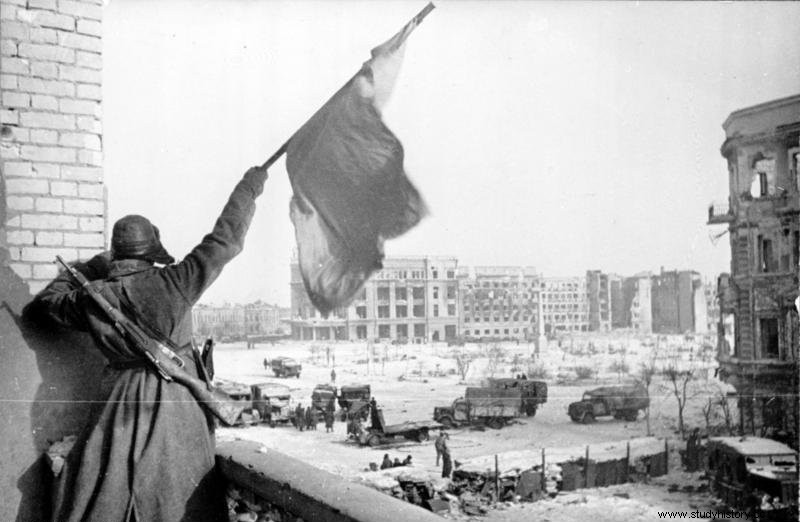- Despite the German-Soviet pact, Hitler launched “Operation Barbarossa” on June 22, 1941, with a view to invading the Soviet Union. 3 million soldiers will open the Eastern front, facing a distraught Soviet army. The Germans reach the gates of Moscow in October 1941.
- However, the non-aggression pact signed in November 1936 with Japan allowed Stalin to redeploy his troops to the West, and repel the Germans. The very harsh Russian winter undermined the soldiers of the Reich, stopping this advance.
- In 1942, Hitler decided to relaunch an offensive in Russia:he launched his armies in the Caucasus to ensure a supply of raw materials (oil), but also towards Stalingrad. The capture of the city would be highly symbolic for the Nazi regime, especially since it is a place of tank production. What was initially a secondary objective eventually becomes the main objective. The front stretches for 60 kilometres.
Summer 1942 - February 2, 1943

Characters
Adolf Hitler
Joseph Stalin
Friedrich Paulus
Procedure
General Paulus, charged by Hitler to take Stalingrad, attacked the city on August 19. The city is located on the banks of the Volga (large river). On September 13, a large-scale assault was launched by the Germans:the fighting, urban, was violent. The Russians defend house by house, but the German air force bombs the city intensely. In October 1942, the Germans conquered a large part of the city, only a thin strip of land is still under Soviet control. Paulus announces to the Führer shortly before winter the capture of Stalingrad. However, the Russian resistance is very present:troops are transported by boat across the Volga. The Russian factories, sheltered from the bombardments, record production records.
On November 19, the counter-offensive took place:the Soviets attacked the flanks of the German army, held by the allied troops of the Reich (Romania, Hungary, and Italy), weaker than the Wehrmacht (the German army). At 5 a.m., to the north and to the south, the Soviet army rushes forward, supported by powerful artillery. On the 23rd, the Russians joined forces, encircling the army of Paulus. Hitler asks the general to hold on at all costs, promising reinforcements. But with a weak air supply and a harsh winter, the Germans could not resist the Russian attacks.
Recording heavy losses, Germany capitulated at the beginning of February 1943:more than 90,000 German soldiers were taken prisoner, including 2,500 officers.
Consequences
- The defeat of the Germans at Stalingrad was one of the first setbacks to Nazi expansion:the British also inflicted a defeat at the Battle of El-Alamein, Egypt, in November 1942.
- 750,000 soldiers and 250,000 civilians were killed, making this battle one of the deadliest in history.
- Although the German army is still well established in the East, the psychological impact is significant:Hitler is in shock, aware that expansion to the East will no longer be possible, and German civilians realize that the Reich is not invincible.
